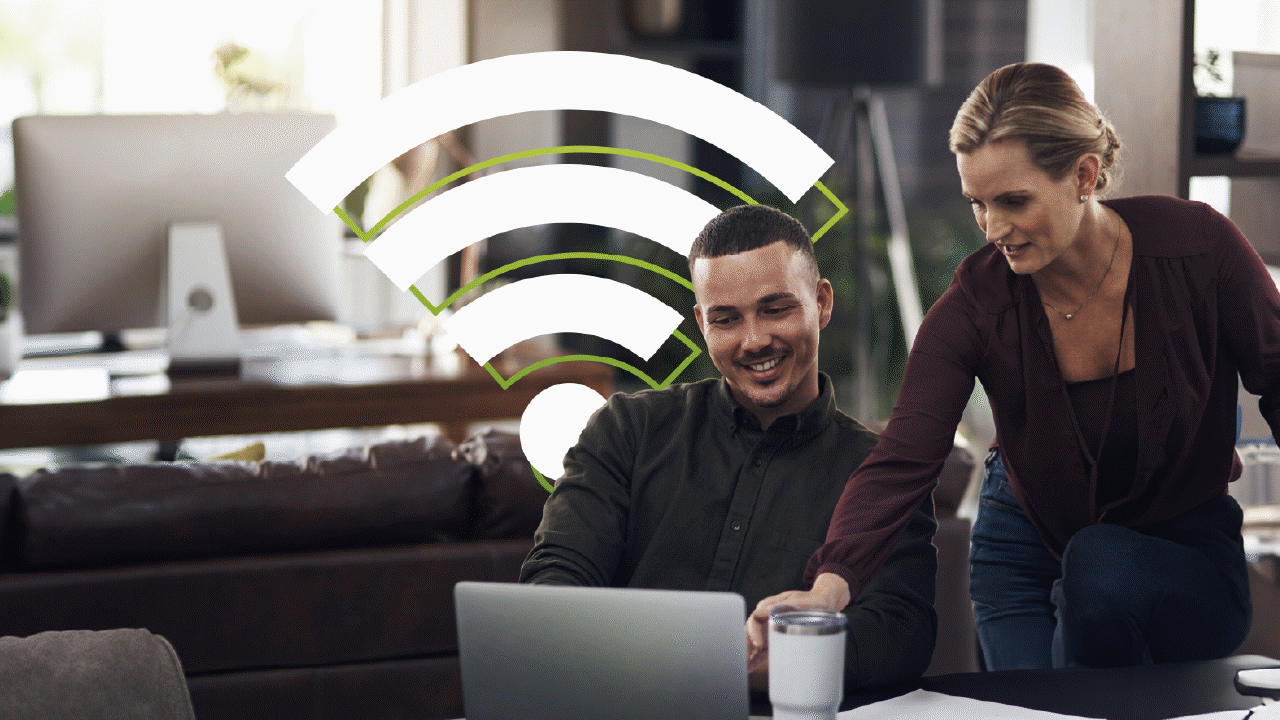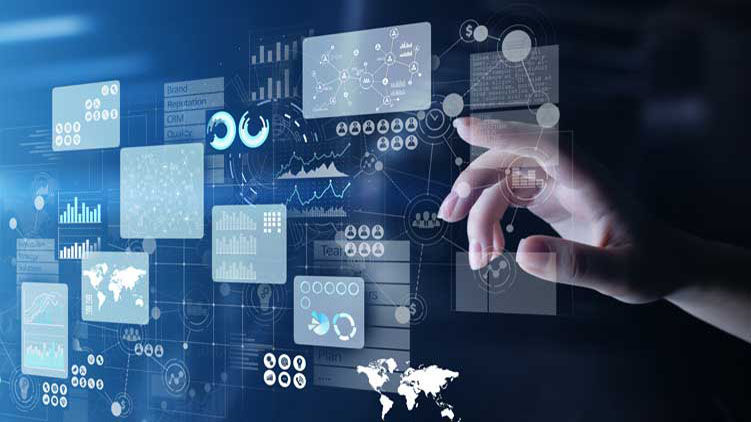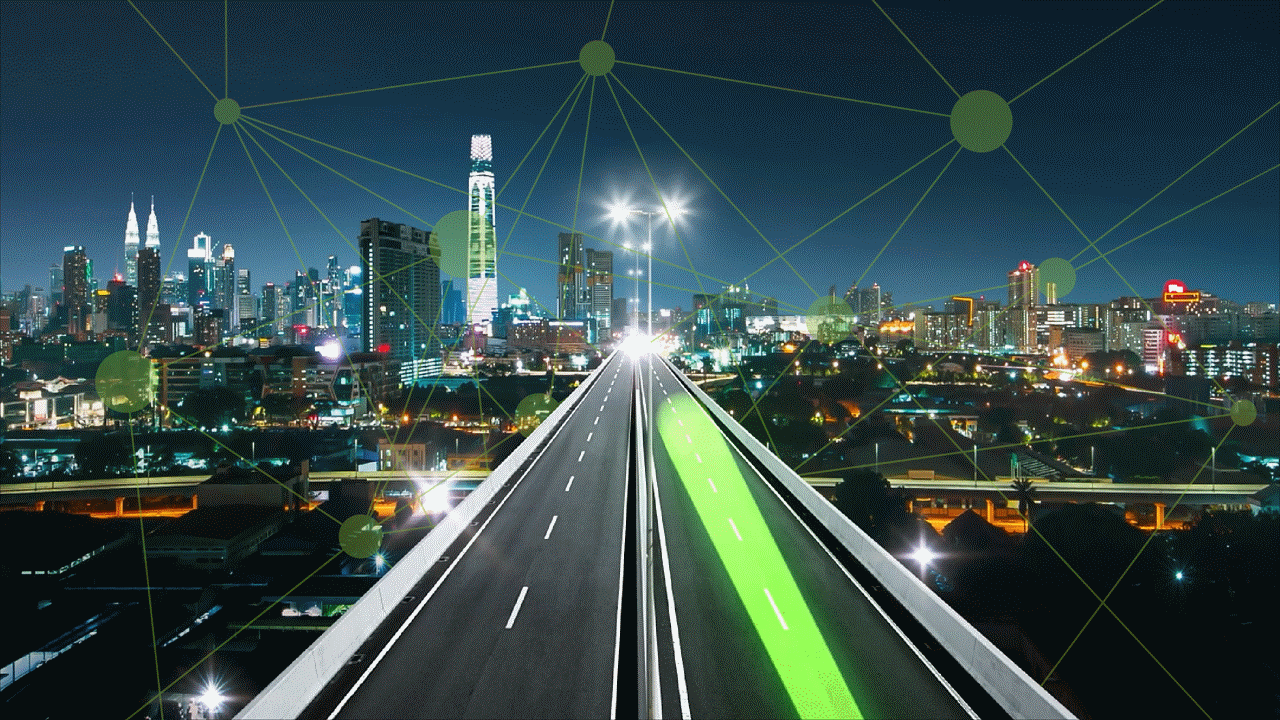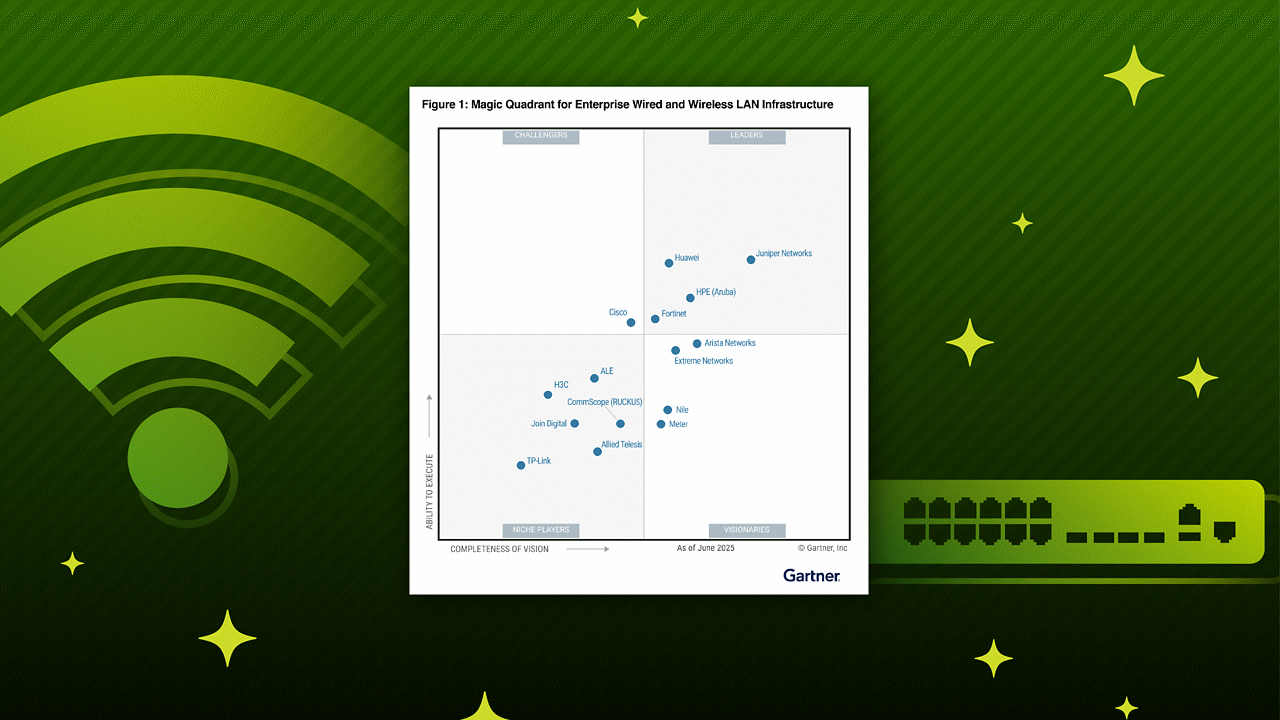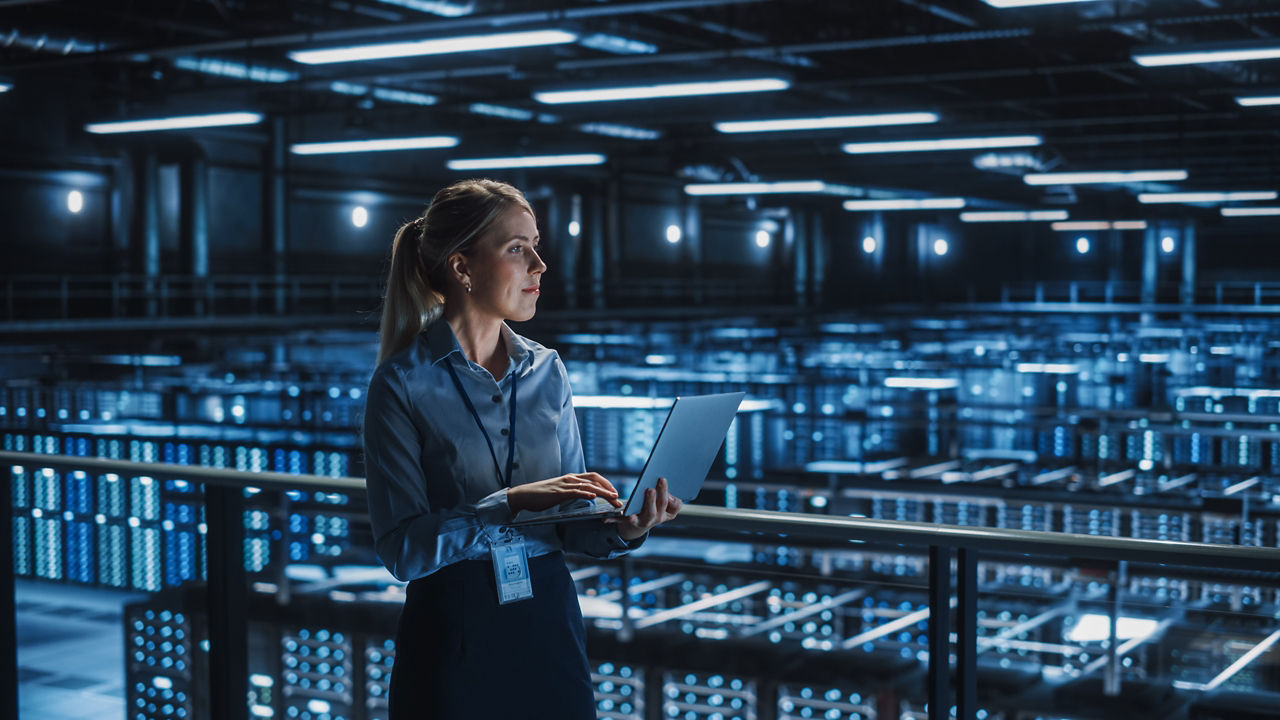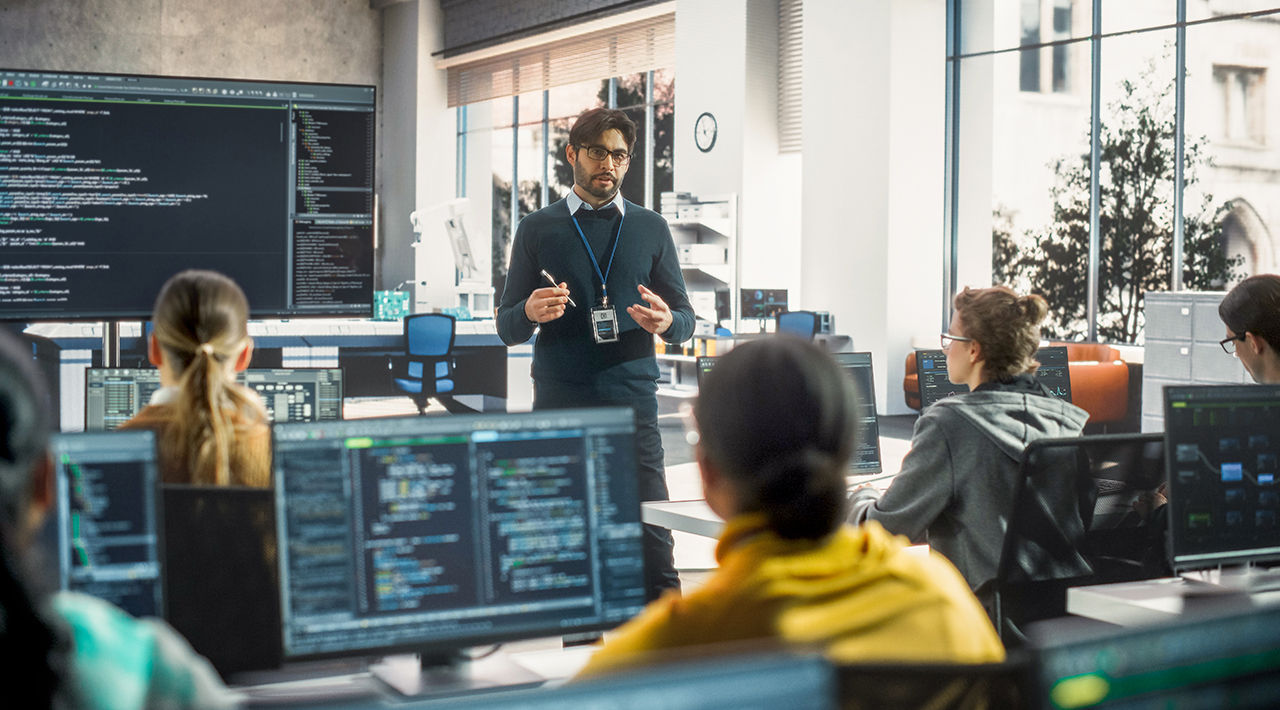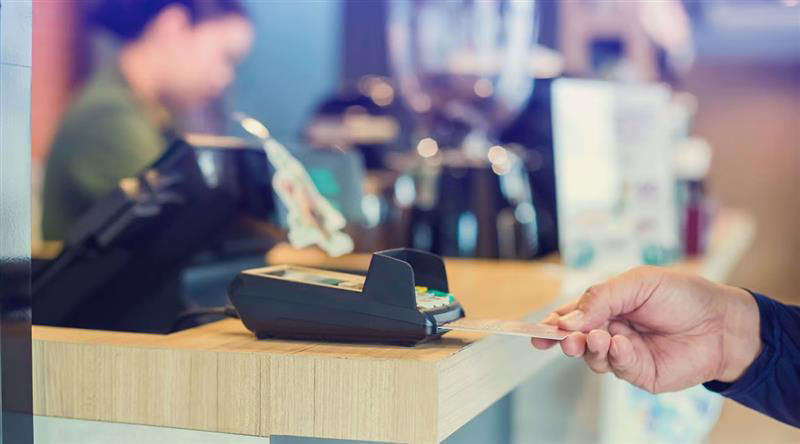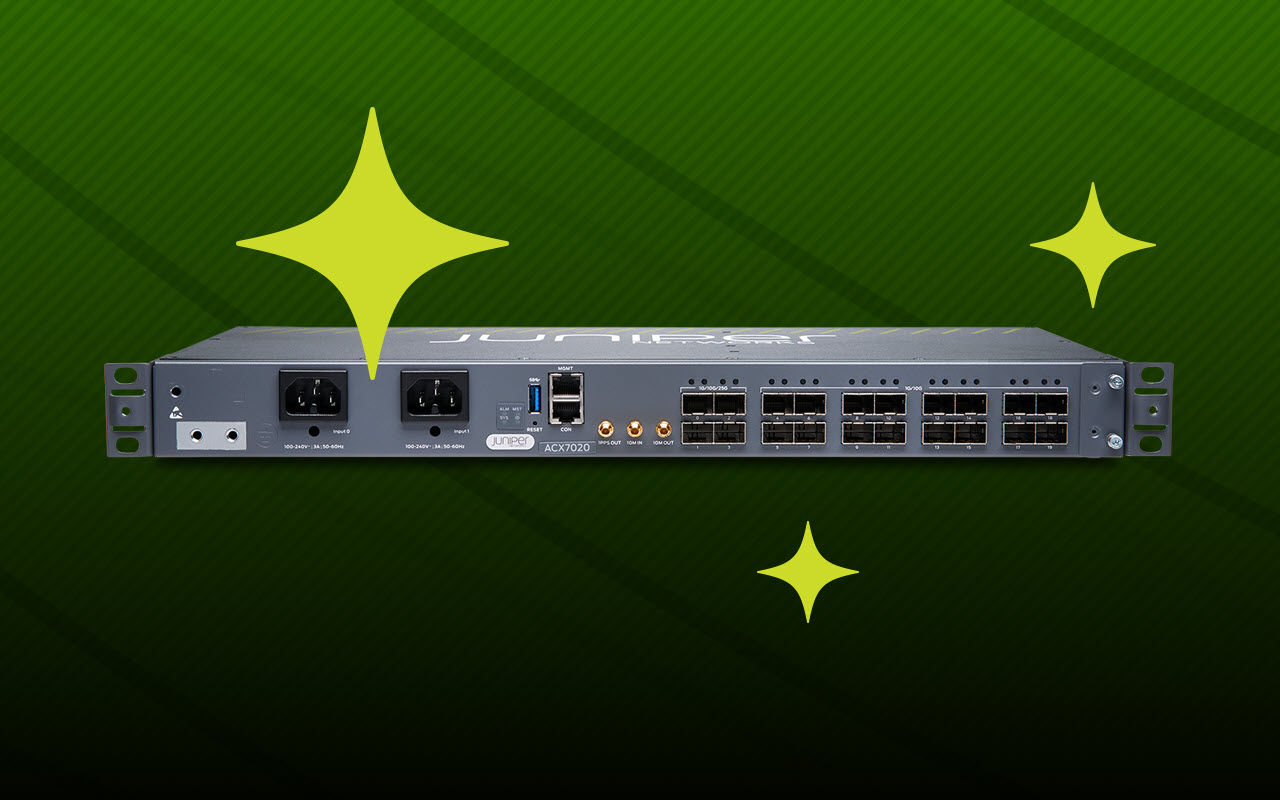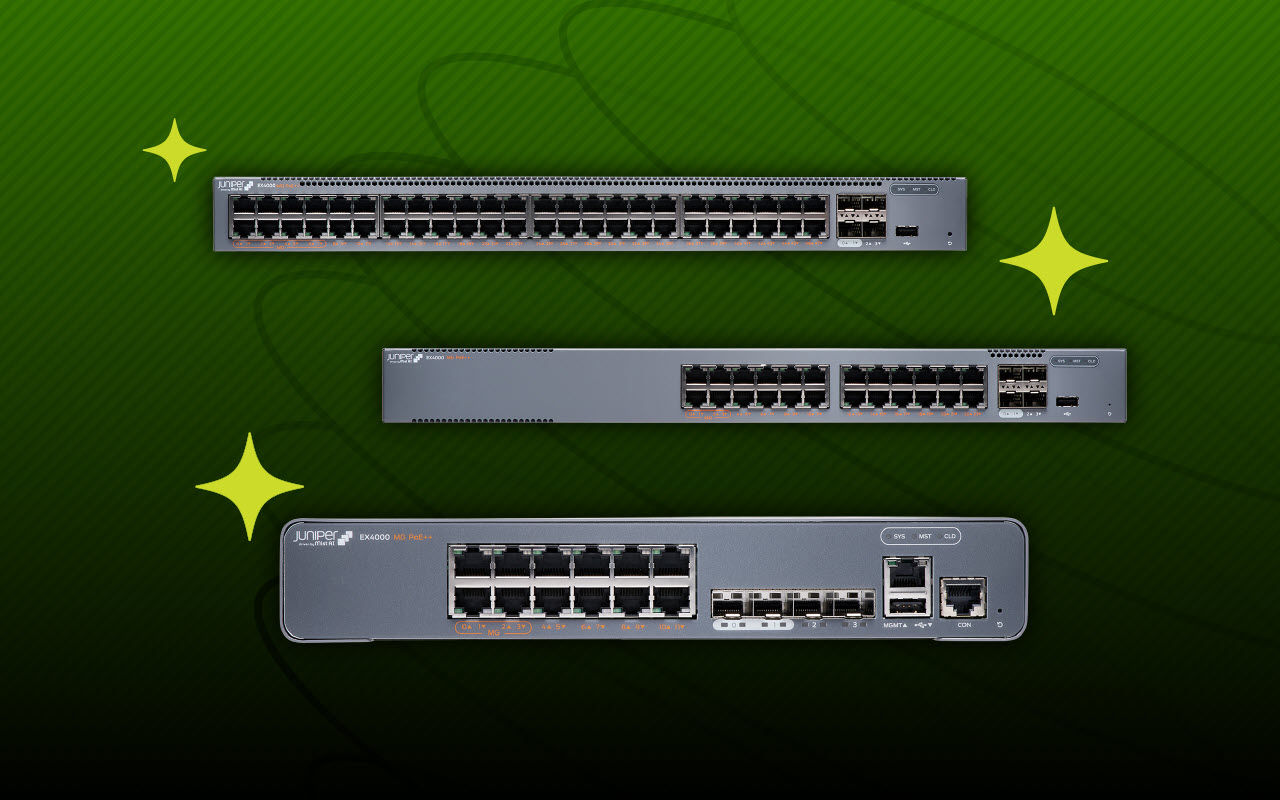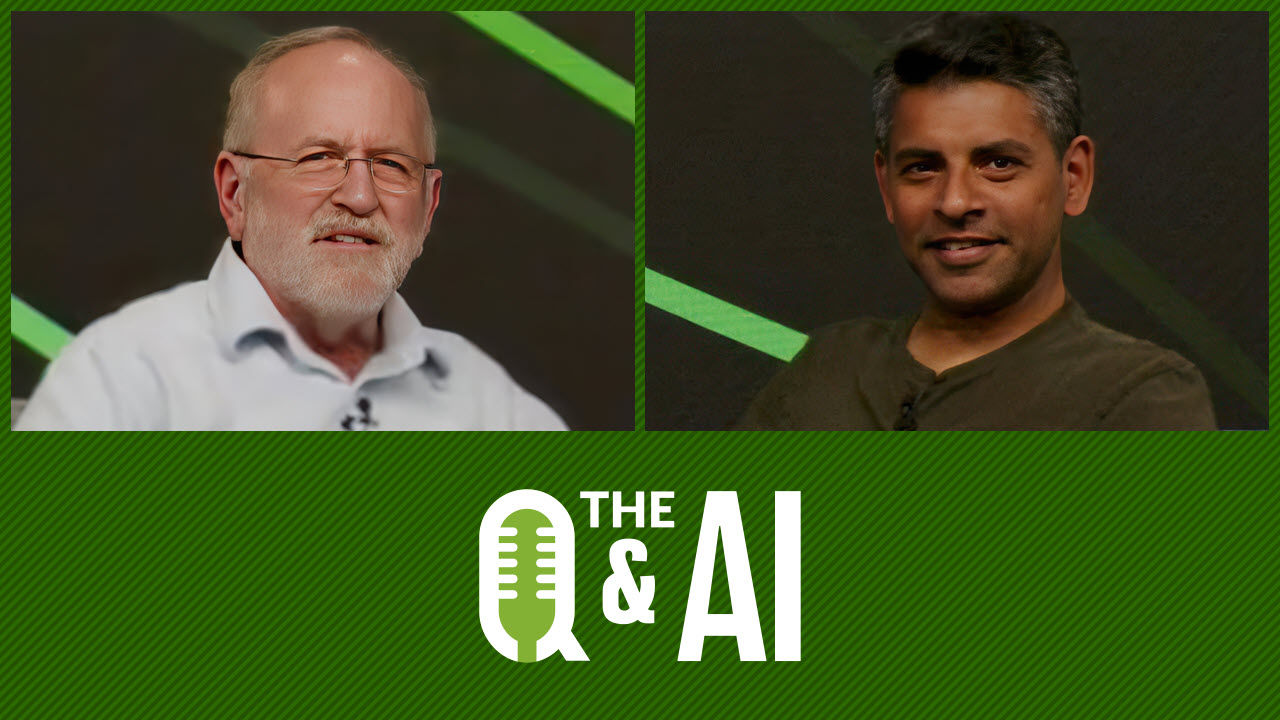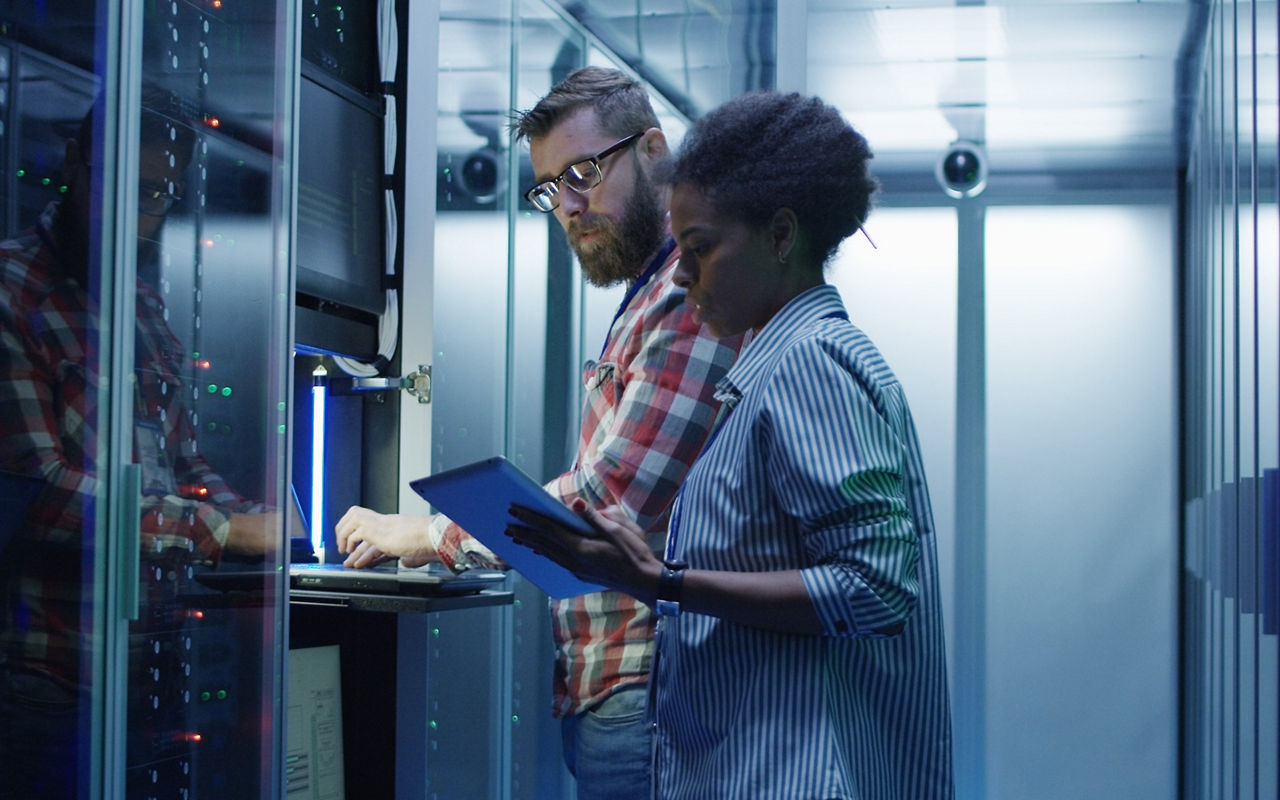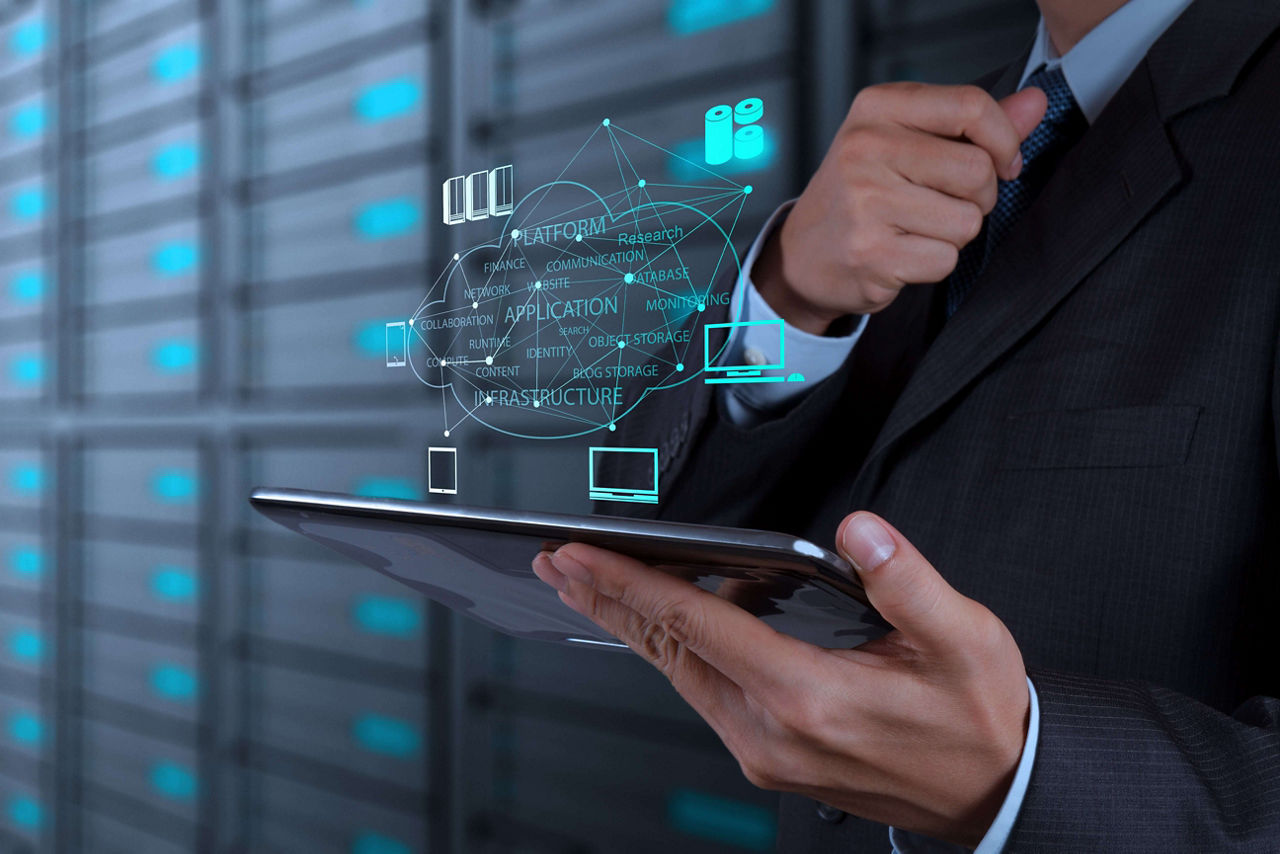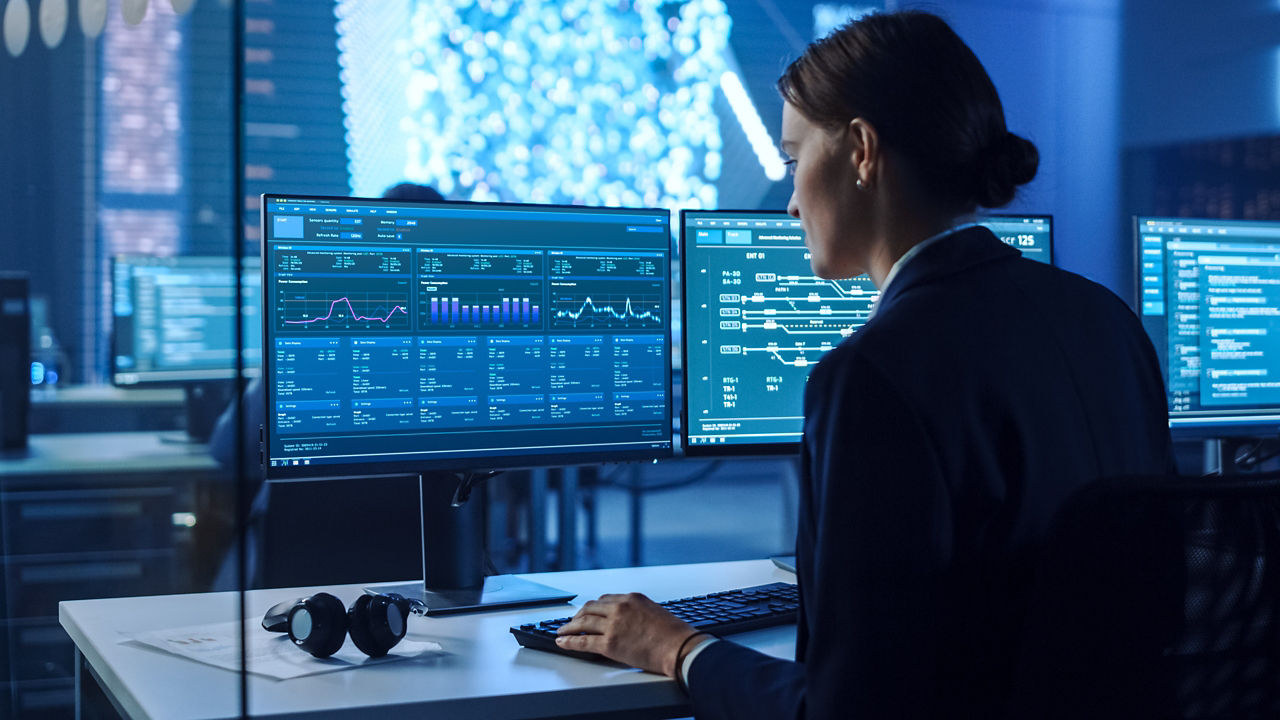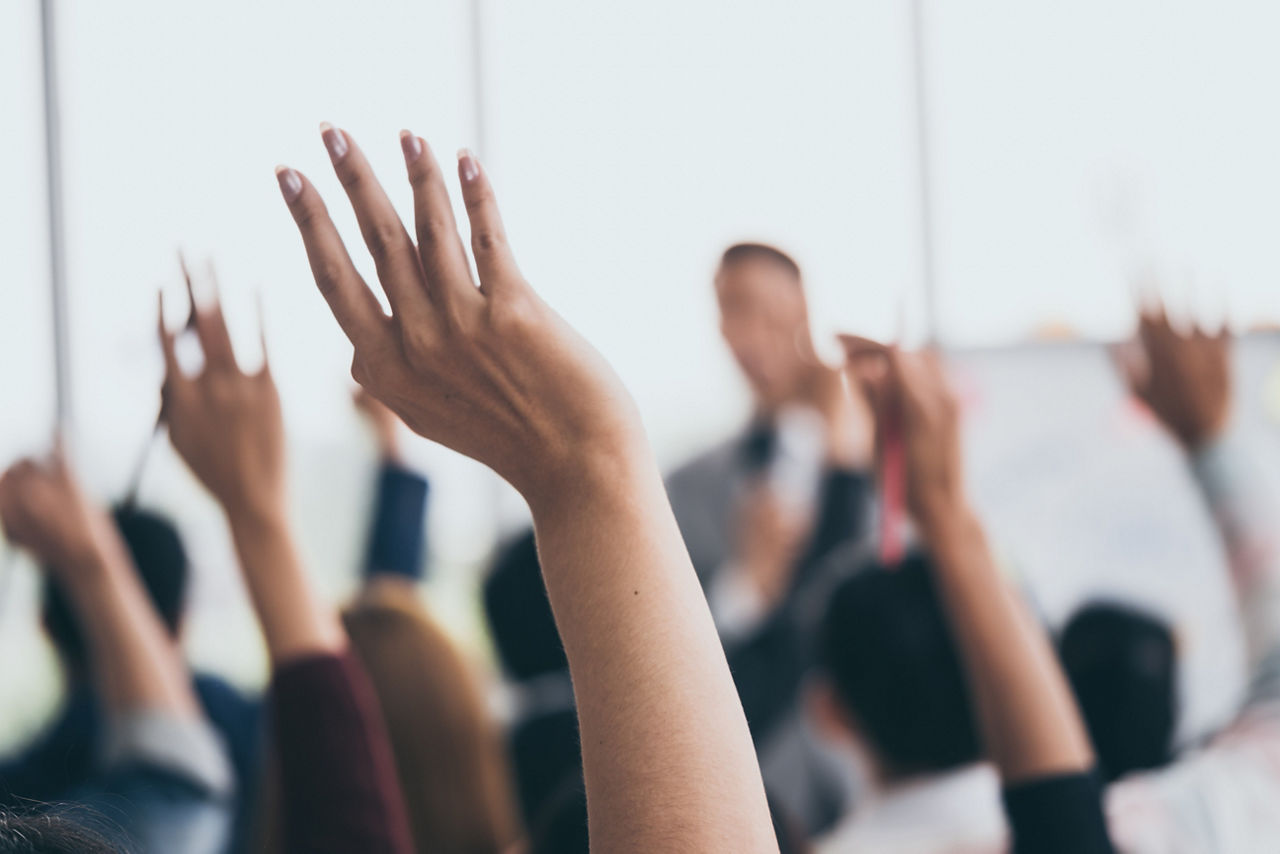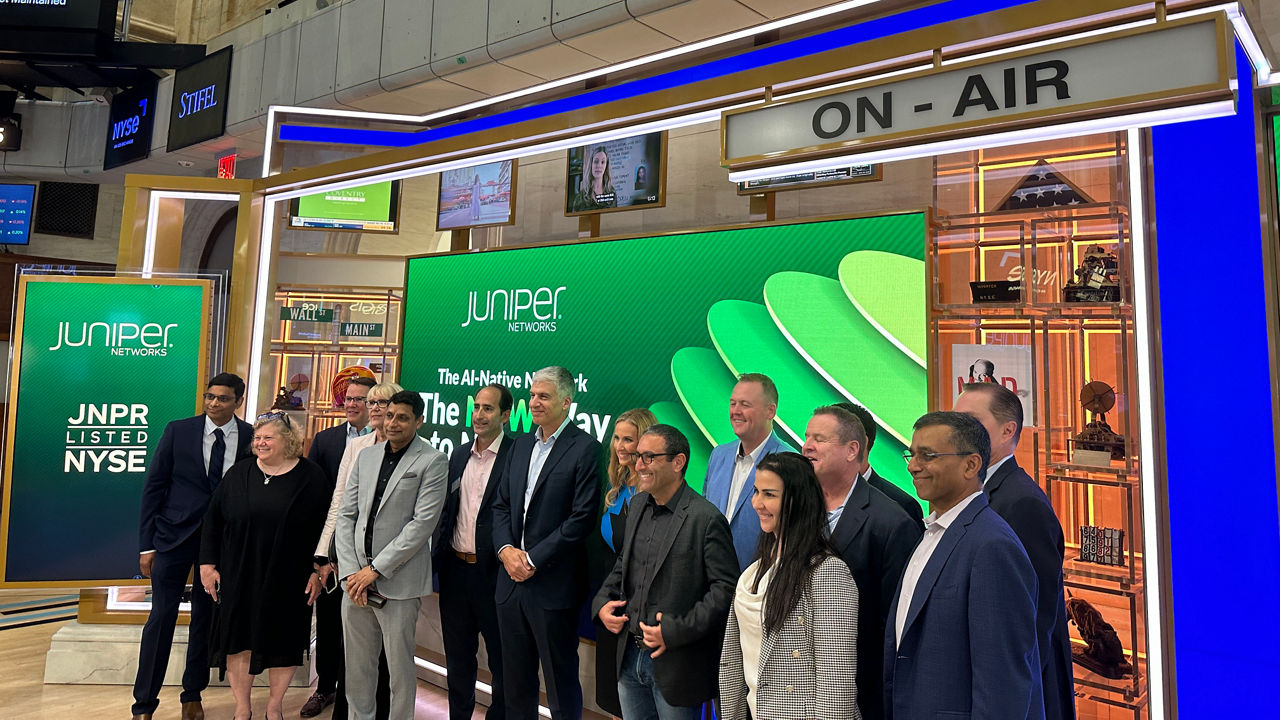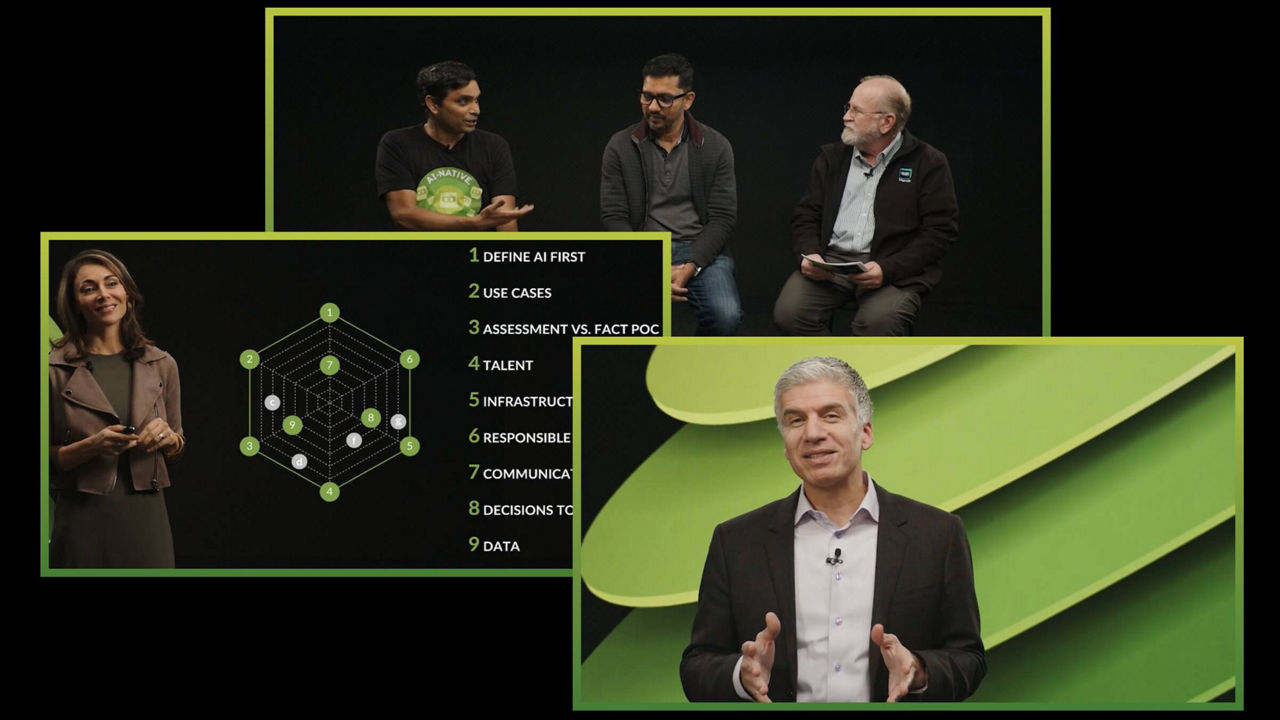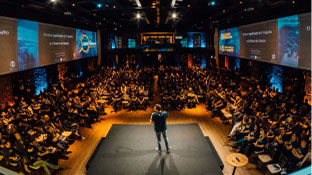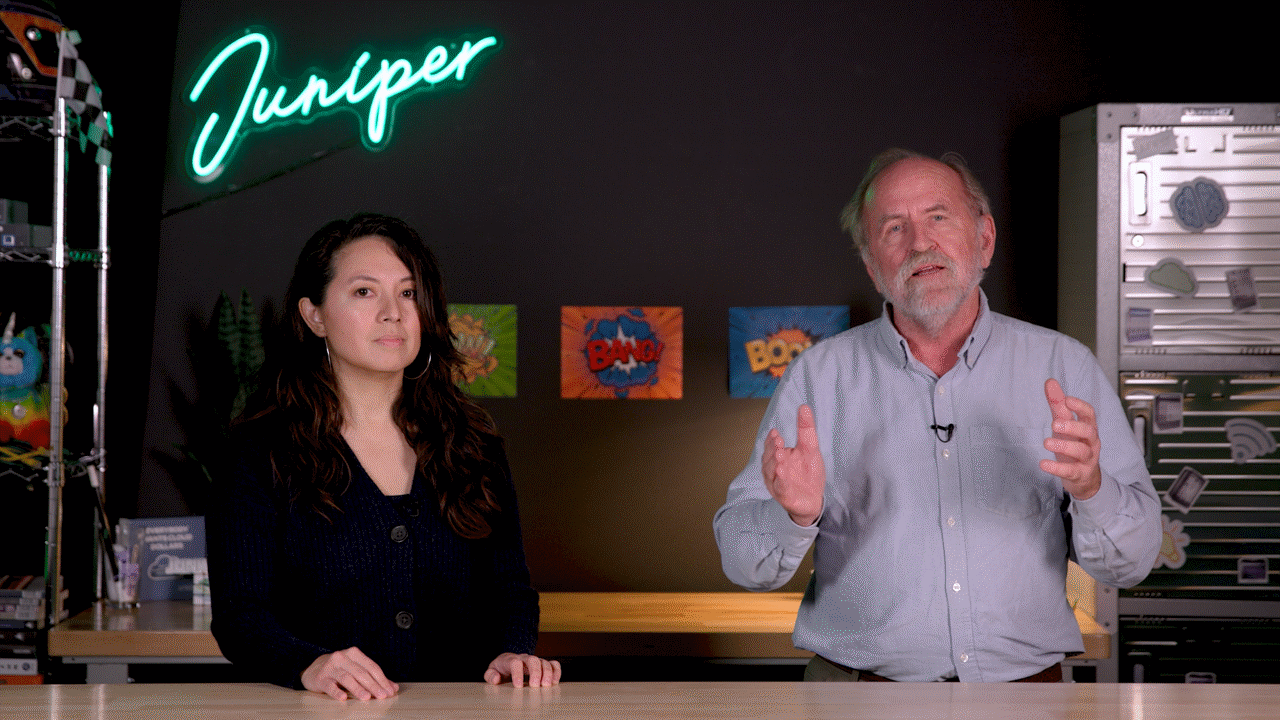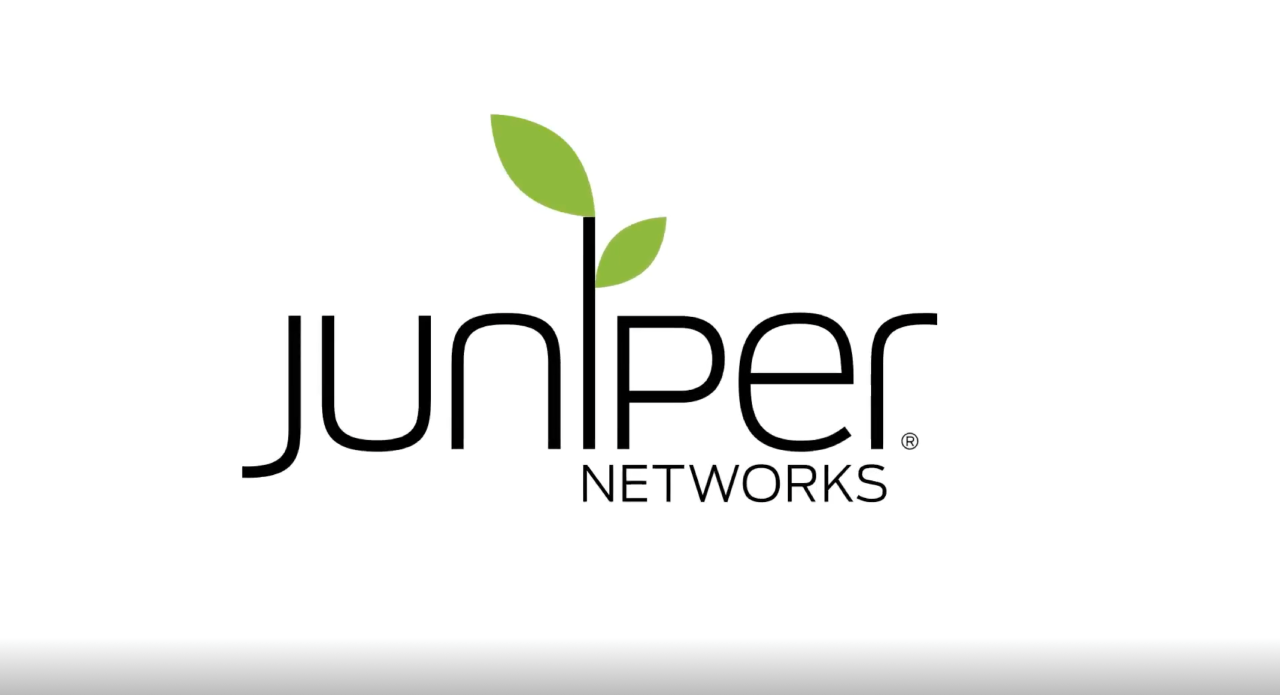The Green Network - Driving energy efficiency, from network core to edge

The Green Network – Driving Energy Efficiency from Network Core to Edge
The need for energy efficiency is becoming stronger and more influential in equipment purchasing decisions and new product development. Service providers need to see a greater return from their infrastructure whilst operating with lower energy consumption. Every aspect of network operation needs to be optimized to drive energy efficiency, and this requires industry-wide coordination. Neil McRae, Chief Network Strategist at Juniper Networks, shares Juniper's perspective on driving energy efficiency.
You’ll learn
How to drive energy efficiency in the age of AI
How to optimize every aspect of the network
Who is this for?
Experience More
Transcript
0:01 [Music]
0:26 well welcome back everybody uh we are about to start our afternoon sessions hope you enjoyed your lunch if you want
0:33 to get your coffees teas soft drinks take a seat uh and to our online
0:38 audience welcome back to you as well we have two back-to-back sessions for you
0:44 now and this next session is on the green network driving energy efficiency
0:50 from the network edge network core to the edge or the network edge to the core whichever way around you want it it's
0:56 very important that we do drive efficiency and it's all about energy efficiency so the requirement for energy
1:03 efficiency is becoming stronger and stronger we know this every aspect of the network needs to be optimized to
1:10 drive efficiency and this requires industry-wide collaboration plus add to this the rapid growth of AI
1:17 and its associated network requirements it creates even more uncertainty so how
1:24 do we move forward and we really want to move forward the point of this session
1:29 is to move forward find a way to move forward before we get into the actual talking points let me introduce the
1:35 guests we have for you so I'm going to start on my left with Lee but Lee if you can introduce yourself and we'll move
1:41 down the line yeah Lee Jones Vodafone UK i'm the energy lead for the UK and also
1:46 net zero lead for UK hey I'm Neil McCree i work in Juniper
1:52 Networks i run strategy for service providers thank you Neil anita anita Duller CEO of the NDMN Alliance and
2:00 Susan i'm the VP for mobile technology strategy in Liberty Global and also NGMN
2:06 board members great well welcome all of you good to have you on our uh session this afternoon so like to really start
2:14 by asking about how we basically decoupled data from energy you know how
2:20 can operators reduce their total network electricity demands whilst the network
2:25 traffic is still growing i know growth may not be as as as what it was but it's
2:30 still on the on the upside it's still growing um and if we decouple bytes from kilowatt hours you know h how do we know
2:38 we're succeeding what new KPIs should we be adopting to help us with our
2:43 procurement choices and operational processes as well susanna can I start with with with you and uh get your
2:50 thoughts on this first so I think first where we are being a little bit
2:56 successful and uh we can still um get a lot of um you know we can still get a
3:03 lot of more success it's starting to uh decommission the 2G and 3G networks so
3:09 really decommissioning the old stuff I call it the old stuff it's really something important and it can happen
3:14 and can help in reducing the energy efficiency especially and also moving the traffic from 4G to 5G i mean we know
3:21 that every new generation is more energy efficient or spectrum efficient and it will have a more um give us more energy
3:30 uh efficiency as well um I think I mean I compared this with like when I redid
3:36 redid my kitchen like three years ago um and I put a new appliance
3:42 um into the kitchen and I suddenly realized actually that my um you know energy went little bit down and I could
3:50 measure that because I had a lot of sensors everywhere smart home you know all the stuff that you can do and it's
3:55 the same as you know if in the mobile network if you just put the new stuff
4:02 there when you do a hardware refresh which is not always you know the case you cannot do every three years you will
4:09 gain some um efficiency on this on the network especially on the run side and I
4:15 think also some cooling technologies that are more there i believe um my
4:20 colleague from Vodafon can talk a lot about that well we we'll hear from Lee
4:26 and that's great and we'll talk about metering and monitoring uh during the conversation uh as well so So Lee do you
4:31 want to do you want to pick up on on that yeah um there's a fundamental that we need to
4:37 keep track of as well as we deploy new stuff we're also turning off old stuff and we need to make sure it's turned off
4:42 properly okay so any mobile we got hundreds of thousands tens of thousands
4:48 of sites in each network there's a churn and and shutting off a site from paying
4:53 the bill isn't always that easy and it isn't always checked and it sometimes goes unnoticed and we found that just
4:59 recently doing a piece of discovery work that we're finding we're paying for sites that have been decommissioned and
5:06 that's overinflating this already quite strained budget line as well so keeping
5:12 your housekeeping right is a big thing you know yes moving to 5G is more energy
5:17 efficient per bite and things like that but you got to turn off the old stuff you got to remove the legacy you've got to actually track it all the way through
5:24 to that payment to the energy company or the landlord to make sure you've stopped it reduced it and you're managing that
5:30 properly otherwise you you're not saving anything any Yeah so when it comes to energy
5:36 efficiency so in NGMN and all the companies sitting here actually uh contributed to um what we are doing in
5:43 the green future networks project um published several guidance documents um
5:48 already on energy efficiency in the past the last one in and 24 and um we
5:55 identified uh separate several um ways how to how to improve energy efficiency
6:01 either by process changes or by real new technologies like um advanced cooling mechanisms and so on and so forth and um
6:08 another um topic we are discussing now also in the alliance is um how big the
6:14 um increase in data traffic actually will be in the future so what is really needed also what is the impact of art AI
6:21 on the network so network for AI and AI for networks um AI also to steer uh
6:27 energy efficiency um and there is a strong uh belief that at the moment the data traffic actually is not really
6:34 increasing because many markets are saturated we have improvements in video codecs uh which is leading to a kind of
6:41 stable data traffic but of course everyone knows that when we go forward with AI traffic with quantum
6:47 technologies um we don't really know yet how this will impact the data traffic and one thing is clear we need to
6:53 improve energy efficiency and we need to continue that that route to improve it
6:58 and to measure it sure absolutely it's a good point you raised there i mean there we went we went 2K 4K there's there's no
7:04 pressing demand for suddenly we're all going to go 8K into our pockets is there um so you know where's that that that
7:10 growth coming from it's not there um Neil what's your thoughts well I'll say the obvious thing turn off the old stuff
7:17 i mean how hard is that but I would I would start um I would start like what
7:22 what do our customers expect what service do they expect what do they expect to see and they all expect to see
7:28 cost reduction so you're tied into this whether you like it or not because energy is one of the the biggest slices
7:35 of of network costs um when was the last time you were in a brand new telco
7:40 facility 10 years ago 11 years ago 13 years ago
7:46 um air conditioning design of the plat the design of the layout uh even how you
7:52 do cabling which can affect air flow um if you really want to grasp this um in
7:58 the most you know sustainably future sustainable way
8:03 you've got to start really at the basics um the data center guys are amazing this they have AI apps that help them lay out
8:10 everything literally every bit of cable every bit of metal where you put a
8:15 server where you don't put a server where you put a switch where you put fiber they've got some amazing tools that I think our industry could learn
8:22 from and and actually we see some operators doing that uh actually notably in in the in Asia um but then of the of
8:30 the modern stuff um you know one of the big things that's happened is over the
8:37 last four or five years is there's a whole lot of new protocols around routing around shutting stuff off and
8:43 but no one's using them because they don't want to upgrade um and that's a challenge for us as network vendors we
8:49 need to make our the quality of our code better but there's one operator I work with in Japan who's who's who's really
8:56 aggressively pushed on this uh and by deploying just some new code and and
9:01 what we call um root power they decide rooting based on the cost of energy as
9:07 well as other other metrics and they've taken out a ton of of carbon and carbon usage but actually also made the network
9:14 much more resilient so this is a game of inches there's there's the obvious big
9:20 inch which is turn old stuff off but you've got to take customers on that journey um I think you've got to me
9:25 meter it and monitor it um and then measure what you're buying and where and where and how you're putting it in the
9:31 network um we don't talk a lot about disagregation actually in every experience disagregation I've seen that
9:38 increases energy usage so how are you managing that again the great guys at Intel and other people have got a whole
9:44 load of new stuff in their latest chips to turn certain things off that often we
9:49 just don't see enabled you know well this thing's using a lot of power why well you haven't turned on these three
9:54 things it would basically half the power that you're using so what what that kind of leads to me to think about is is
10:01 actually the key part of I don't like to call it the green network i like to call it the sustainable network is actually
10:06 the people that are building it how are they thinking about this you know as part of this journey of of making our
10:13 network more sustainable do they know about the fact that you can almost half the power half the half the power that
10:21 used in an Intel server by changing three things on the BIOS do they actually know that because actually
10:27 often they don't so is your team really thinking about energy usage at the
10:33 forefront of everything that they're doing and and quite often because they're busy they're under a lot of
10:39 pressure you know and technology moves insane amounts of speed do they really
10:45 know um what the opportunity is just by doing some simple software changes which
10:51 aren't hard they're really simple uh and you don't need to impact customers you don't need to do heavy forklifts you
10:56 don't need to reroute but they can have massive impact especially on things like you know we see some um cloud-based
11:04 headends they're all Intel based they got millions of customers connected to them there's hundreds of thousands of
11:09 them out there in the network a few changes and bang you're saving tons of tons of energy can I pick up on this one
11:15 um and and maybe Lee can I maybe start with uh with with you um do do you see
11:20 do you is the message percolating down through the organization you have to have two conversations in the business
11:27 you have to have an active and passive conversation the active one is the network elements the radio the servers
11:32 and everything else that's a different conversation it's a different audience the passive side is the building the facilities guys the cooling the power
11:39 and things like that that side that's been there forever you know everyone's been more focused now because energy
11:45 price yeah my business cases are really good at the moment so it's really it's really quite easy for me to get funding
11:51 for elements on energy stuff we've really got uh there's an appetite to be
11:56 use less and save more which is really good but translating that same enthusiasm into the active side the
12:04 radio and the servers is a harder because like you say they're they're focused on service delivery growth we
12:11 need to we need to just pair those together the trick I use is show them the money
12:17 translate those change into pound shielding and pence you can see how old I am sorry euros if you like yeah into
12:24 real money because once you put that that saving number in front of someone
12:29 people start saying I want that and you have to motivate it's a different motivation
12:35 okay thanks do you think that there will be really you know significant savings
12:41 in that active part and because it will mostly opex it
12:47 example yeah we in your software licenses you get from your radio vendors
12:52 yeah majority of them have energy saving software features some people don't buy
12:58 that that license so they don't get access to it that can save a hell of a lot of of it the the the um active
13:04 they've got active power on the 4G you can shut down a high band when there's no traffic it shuts it down
13:10 automatically hold on a minute i'm taking 15 20% out of my energy consumption for that radio unit because
13:16 I've got no traffic cities beaches weekends think of all those places that
13:22 go quiet at the wrong times a day yeah you know you look at the cell sites in
13:27 London in the business district you'll see that the energy profile will dip during the quiet hours yeah um we did a
13:35 trial in Valencia a long time ago and you Why isn't that working it's because it's winter and no one's at the beach so
13:40 we've turned it down yeah it makes perfect sense so it's it's not that illogical so are you saying some of
13:46 these energy saving functions are effectively optional add-ons for an
13:54 but I think most of us already implement it some of those the vendor specific energy saving functions but then do you
14:01 track them yep on a siteby-sight basis because they sometimes get turned off
14:06 and turned on and we've got a dashboard that goes 1 million 2 million 3 million
14:11 this is what you're wasting right today by not having this active and is an active thing to promote awareness and
14:17 action i have to say my my experience of service providers is they have like a
14:23 and and I worked for one for many years and I can attest to this you have what's called a
14:29 a program and everyone's running around hey you know BT we called it October we
14:35 turn everyone off in October and then November comes and everyone forgets about it and it's not again it's not a
14:40 criticism it's just human nature this is about setting the right mindset right and I challenge everyone says well it's
14:46 only a little bit you know and actually only a little bit if you do it a million times it's a lot so I kind of feel that
14:52 you you've got to have that uh mindset and actually the thing that I used to
14:57 push for on this is look here's if we save a million quid in power that's four engineers we might be able to hire to
15:03 help us go faster on on on other stuff do you want to give all this money to the power company or do you want to invest it in skills and capabilities and
15:11 I think when you when you look at it through that lens you know actually you know this this this rack of kit is
15:17 potenti if we were able to depower it is potentially 20 people that we could have working to create new services for
15:23 customers then there's the simple thing is which is our customers expect us to
15:28 be doing this there's no debate about it um you know
15:34 it is you know people say "Oh this is fashionable or trendy." I I don't see that i see a constant push for it um our
15:40 Marvis engine our AI engine and and our enterprise equipment will actually flag stuff hey this stuff's all powered up i
15:47 can turn it off for you but the moment it's not being used and we can turn it off uh and I think we need much more of
15:53 that approach which is actually you know you you got all these optics lit up but there's no there's there's no one using
15:59 them how do you power them down and again this tends to be uh you have a phase where everyone's running around
16:04 you know it's oh we're going to miss the budget let's have a quick fix get the mindset right so that when you're putting new stuff into the network or
16:10 when you're building a new new piece of the network actually what is the what does the actual building need to look
16:16 like and yeah that can be a hard discussion in the short term but in the medium to long term which most telos
16:23 that are here today will probably be here in 20 years um it starts to make a lot more sense so uh Anita um is are
16:32 your operators members saying to you look there's a need for some um energy
16:37 management processes to be not standardized but best practiced or blueprinted so shared and and adopted is
16:44 is this something that that that's uh that operators are uh calling for as a group yeah absolutely so I think we have
16:52 several dimensions one is the energy efficiency the other one is the type of energy used also variable renewable
16:58 energy management um and then of course the metering topic so how to measure
17:04 what we are doing how to report what we are doing and I think we have some kind of fragmentation in the
17:10 industry when it comes to metering when it comes to reporting and everyone agrees that it is absolutely needed
17:16 because it's hard to improve something um and to understand where the best levers are for improving energy
17:23 efficiency if you are blind if you have blind spots with regards to metering so what we have done in NGMN just recently
17:30 and we will publish we published recently in environmental uh sustainability and reporting um um
17:37 guidance uh but now also we will publish very soon um a new document a guidance
17:42 on metering in transport networks and um energy management and when it comes to
17:48 energy management um the hard part is that of course we are a global industry
17:53 so we need global standards but then at the end every operator more or less operates in a national environment which
17:59 is regulated which has different situation when it comes to how much renewable energy is already available in
18:05 the grid um and how much renewable energy is available in the country as such wind energy solar um energy so this
18:12 is something where of course every company needs to adopt it for its own situation but we do have um published
18:20 guidance when it comes to what needs to be considered uh by companies and I think that helps already because um the
18:28 reason we are there as an organization is of course to fix it before it breaks
18:33 so we work in a pre-ompetitive environment and I really like always to hear specific examples like um from from
18:40 my fellow panelists here because that's something where others can also learn and adapt and I'm curious also to learn
18:47 so Neil you you spoke about um the processes that people human beings of course forget stuff and how much uh
18:54 could automation help and how reliable um data um are um available already for
19:00 um applying those type of automation and It's easier said than done it it is but it's a good point to to make isn't it
19:06 people are fallible um so you know let's let's let's pick up what what what can we do about that i mean it is all about
19:13 I mean this is a have this kind of network modernization approach which is you know how are you
19:20 building the network of the future ania um put it where actually most of the
19:26 networks in Western Europe aren't growing in the way that they were um France last year at 10% growth so what
19:31 does that mean for networks because before we as vendors we sold more kit based on capacity demands and if that
19:38 goes away you know that that's a big challenge for us so so I look at network modernization which is okay how are you
19:45 using the most power efficient equipment where are you putting it how are you what's your what's your strategy around
19:51 long distance um how are you using automation and automation is key it affects all of these things and and it
19:57 goes back to my point I've made on this stage at least twice before humans can
20:02 no longer run networks just fact so please stop having humans
20:08 run your network because they get the power config wrong they get the security config wrong they get the routing config
20:14 wrong they get the billing config wrong and and it's not a criticism it's just who we are as humans and we have to face
20:20 into that so accelerating everything that you can do in automation is
20:26 crucially important there's an event last week called Autocon 3 it was in um in Europe where some of the stuff that
20:33 some operators are doing it tends to be the smaller guys it's just amazing um in
20:39 in this area but actually power management was a big focus hence me
20:44 learning about the BIOS changes that you can make they've just got that automated as part of the rollout script hey we
20:50 we're going to push a new BIOS here's the here's here's the config um you've got you can manage that on a kind of box
20:57 bybox or individual basis but I still see in my my travels lots of operators
21:02 trying to do that or not even realizing that they need to do it so it's it's you
21:08 know in your automation strategy building from you know zero to
21:13 production what are the things that you're missing in energy but what are the other things you're missing in routing or other stuff because it's
21:20 costing you money or it's pissing your customer off um more likely the second and the than the first and and that's
21:27 that ultimately means your your customer walks away do not want to do absolutely thanks Neil which brings us to another
21:34 question you know if if we're not replacing our kit and look at the RAN based on everinccreasing network traffic
21:40 um you know are we still seeing innovations in the RAN that can can that can result in a step change in energy
21:48 savings is is this the is this the way in for RAN innovation is looking at uh how energy savings can help push an RI
21:55 increase um Lee are you seeing anything yet on that area yeah a lot so
22:01 Vodafone UK is a 40-y old network we got our 40th birthday not so long ago it was quite a nice event and some of the sites
22:08 are still the walk-in cabins that I think I installed in the '90s yeah and did a good job there i know they're
22:14 still there don't leak still work still on um what you've seen is that evolve
22:19 over time we've done the a ramping you've put your radio stuff out so there's no much calling you still got
22:25 sites with calling it's still they're still sitting there they're still being managed by 10 volt free alarms there's
22:32 no intelligence there now we're putting some we're putting some IoT devices into these buildings now to try to optimize
22:38 how we control that calling you get a mains failure alarm okay is it the mains
22:44 is it the breaker is it something else i get a DC power system failure okay i send an engineer it'd be nice to be able
22:51 to send him with a rectifier or something to fix it so we're we're deploying that sort of intelligence to manage those passive assets as well now
22:58 so we're putting we're we're we're drinking our own champagne okay so it's a Vodafone Vodiccom company that we
23:05 purchased a while ago and we've taken that technology and we're putting it into all all the networks so we've got a we've got to critical mass now we've got
23:11 1500 sites up and I can tell you if it sneezes I know about it yeah now I'm
23:17 taking that data now bringing it into the ops teams what happened in Spain a couple of weeks ago well the power went
23:23 off now the questions are rippling down to us saying what battery backup we got what happens if this I don't know 1500
23:30 sites that's what's happening yeah take that one step further and it links into the AP i'm trying to link it into the
23:36 API conversation you got coming up i'm talking to UK power networks can I give you an API to tell you where the mains
23:43 has failed how long it's failed for and how long my batteries have got left to last last so you can fix my site first
23:51 to keep your network up because they use the mobile networks to switch the power networks yes so why not work hand in
23:58 hand so that on that side on the actual pure ran kit there's there's other I'm
24:03 not I don't try to stay away from the rank kit on more the mechanical side but that's where we're going with that i
24:09 mean there's definitely one thing on the ran so we use one of the biggest use cases for radio is fixed wireless access
24:16 and it's probably the most inefficient way of delivering internet connectivity it burns tons of power tons of capacity
24:22 and there's actually a lot of um other vendors out there that have got um specific solutions for FWA that are much
24:28 more low power much more higher bandwidth much better use of spectrum tyranno Networks is one of them based
24:34 out of the US but there's other guys that are creating uh alternatives to that and fixed wireless access traffic
24:41 is probably I don't know well when LFPT it was about 60% of the traffic on the network i can only imagine that's got
24:46 worse and also we're offload on to fiber how do you ensure that customers that
24:52 couldn't get a great service but can now how are you attacking that customer hey we've got fiber now you don't need this
24:58 FWA we're going to do a deal because we can turn off this really expensive um FWA solution um and give you a fiber
25:06 solution that's much more reliable uses a hell of a lot less energy uh and actually saves saves capacity for the
25:12 mobile users that need it thanks very much for those examples can I can I come back a little bit on the
25:18 real run stuff i mean I I get the fixed val access but I don't really believe in
25:23 a fixed val access in in Western Europe there are only few countries that have really deployed that um and we have
25:30 tested Tana and they yeah they are efficient but not as efficient as for
25:36 example some other suppliers that you can get but doesn't matter uh I mean on the run side you can really go and do
25:43 like a what the equipment vendors are providing you but you can also do what automation can provide you on the
25:49 network level so you can do on equipment level all the features that the suppliers have you can go my sleep deep
25:55 sleep well deep sleep not yet but we will be get there but you know putting the cells into sleep at night it's
26:02 something that we already doing for a couple of years it was already there I mean from most of the vendors and it's
26:08 still there I think putting the the massive mment to sleep is also uh on the network level you can go into the you
26:15 know more this the type of solutions where you really go into automation and
26:20 not you know eliminating the human and going towards the more dynamic stuff i
26:26 think that is where you can you know get some efficiency okay good well we'll
26:31 we'll you know we'll come back next year and we'll follow up and let's let's see how we're going because we're really interested in this um thanks very much
26:38 we've got to move on to another talking point here um this is a slightly
26:43 divisive one you know AI traffic uh and the impact of AI traffic on on energy um
26:49 consumption in our networks and it seems to me personally that um the statistic or the the data changes so so much
26:56 there's a report out just today I think about AI workloads and the need significantly more power than other
27:02 cloud workloads and we're seeing what data centers do but it comes down to look if if if we're saving if we're
27:09 starting to get a grip on the RAN side which is obviously a huge energy consumer on the network's massive if
27:14 we're starting to get the grip on that and see the um improvements there how do
27:19 we ensure that they don't suddenly become you we lose those gains with um extra AI traffic or are we getting
27:27 excited over nothing with with with AI traffic what's what's what's the like do we do we know the likely impact of um of
27:33 AI traffic as that increases on our energy consumption in networks anybody
27:39 uh want to hazard a an approach at that so so I think um
27:45 there's two so in our organization it's it's a constant discussion about what is the real impact of this and and actually
27:51 we think that the the pure AI control plane for one of a better word
27:56 it's probably not a huge amount but it's what the applications might generate so for example you know there's a few AI AI
28:04 apps out there that will create videos and clearly video drives traffic right um so that's one aspect of it But I
28:12 don't think we're seeing a huge amount of you know all of a sudden this in the
28:17 pie chart of traffic suddenly AI appears as a slice i just I don't think anybody's seen that however um I
28:24 remember just before the BBC launched um an online app um
28:31 that changed the way we watch TV um and actually with the ISP community caused a
28:38 bit of a riot because they were saying "Oh wait a minute all of a sudden our usage has gone up and why is the BBC
28:43 there's a big debate this is where the net neutrality um thing started and I think we're on the on the level of
28:49 maturity I think we're at that stage and you know there's a belief about what would happen with video traffic and what
28:56 wouldn't I always believed it was going to it would grow but then plateau because you've only got two eyes um but
29:02 I think we're we're so early in the AI phase I think you know and certainly the the generative AI phase we're super
29:08 early AI has been running a lot longer Um but I think we're so early that
29:14 anyone making a bold prediction on that is is probably going to regret it i
29:19 can't help but think that there will be an increase in traffic will it be noticeable like peak time traffic i very
29:25 much doubt it is my take but um I definitely think there will be a traffic impact in a data center there's a huge
29:31 impact we see it already um you know you see these big fiber deals being announced to connect data centers
29:37 together um but I don't see AI itself
29:42 driving a massive amount of traffic but the outcomes of AI I I hope it does drive traffic because I think we kind of
29:49 need it in the industry something new that a a new um you know killer app that
29:55 drives interest in and the networks that we're building thanks Neil lee do you want to come in as a whole we're seeing
30:02 network energy consumption forget cost for the moment because that's a bit volatile consumption remain largely flat
30:09 i'm seeing it start to pick up in our models for next year and that's our sell site growth it's not data center growth
30:16 but that's because I want to blow my own horn we're doing a really good job so we're closing stuff down now it might be
30:23 masking the effect of additional traffic but we are removing legacy energy efficiency me we're doing all that but
30:29 it it's remaining around about flat i'm happy with that i'm not seeing a spike in it as long as it stays flat fine i
30:35 wish the budget would stay flat but that's a different question well I think I mean you but you blew your own horn i
30:41 think you should actually our industry's done a great job at reducing um power
30:46 consumption i think I'm trying to remember three or four years ago there was a stat where Telos were one of the
30:52 most aggressive you know as a as a group one of the most aggressive organizations reducing energy
30:58 usage actually that was a byproduct of what we were doing but it set us up well for when you know at least here in
31:04 Europe when the electricity prices changed it was kind of like okay how do we accelerate so I think I think there's
31:09 a lot for us to be proud about as a as a as a as a group compared to some other industries where it's either harder or
31:16 longer there's longer capex cycles but again it's and what's driven that mostly
31:21 is mindset we need to keep pushing that mindset great thanks very much Neil
31:26 Anita did you want to yeah I think we are discussing probably the $1 billion question of the industry at the moment and uplink for sure will be affected um
31:34 but how much who knows and I I I would like also to to say so I was um uh
31:42 triggered by by Neil's uh statement that the energy consumption went up uh with
31:48 virtual virtualized networks because in principle the um objective of
31:53 virtualized networks and disagregated networks was is the opposite that we can
31:59 uh that we are able as an industry to um yeah to dimension networks in an agile
32:04 way that we use commercial off-the-shelf uh service hardware and that um um we
32:12 use intelligence um steering to yeah to to dimension the network and of course
32:18 it's a probably a longer way to achieve this um and then it comes to the energy costs um it's it will be really
32:26 interesting from my perspective how much or how big the effect effect effect can be from renewable energies and they of
32:34 course also cost something so they are not for free but um the the question how
32:40 to balance uh the benefit coming with EI for energy efficiency at the same time
32:45 AI consuming energy and increasing the traffic in the network uh compared to um
32:51 the different types of energy use used in the network so the variable renewable
32:57 um energy management all this together holistically in theory at least should
33:02 should lead to a better situation but how to achieve this in practice I believe that's something we will do hard
33:09 work as an industry oh yeah absolutely and I'm sure you will at NGMN um I I did read on the weekend u Mary Mika's latest
33:16 report after a long absence has come out some great stats in there and great stats on energy and AI energy and one of
33:21 the surprising ones for me was how how um inference costs are just dropping massively and fast as well which was
33:28 going to be like inference at the edge what's that going to do to our networks but um maybe on an energy side maybe not
33:33 too much uh I think there's something to learn though my wife works for a GPU as a service company and they're building
33:40 data centers and and GPU clusters like at super pace but every kind of new
33:47 thing that they get um has a power of benefit and it's kind of one of the
33:53 leading things that they look at so when they're when they're they go build a new data center they literally build a
33:58 concrete block they stick servers in it um and they literally order all the servers at once so and depending on
34:05 who's one of the big key differentiators from is actually who's got the the most efficient platform and I think some of
34:12 the vendors in that space uh and and I think Intel as well have done a great job of continually driving out that cost
34:19 because it's it's a barrier for them to sell again I think we need to look more at how do we you know we used to have
34:25 the the sign on the fridge with the different colors where's that for our network efficiency uh cuz I think having
34:31 something as simple as that you know imagine every EE store's got a an energy
34:37 efficiency and next door to it there's a Vodafone one that's got energy efficiency you know cuz cuz I think
34:42 instrumenting that for customers is one I think something they're appreciating and two really sends a signal to the
34:48 business that says "Hey you need to do better on this." Um and and I definitely and it goes back to Anita's point about
34:54 measurements and metering we absolutely have to do that otherwise we'll we'll
35:00 fix something here only to find out there's a surprise have an interesting stat just this is
35:06 this is my ace in the hole when business cases are threatened 20% of bids to
35:12 external business are now scored on your environmental credentials so don't go
35:18 cutting my net zero budget or my energy budget because you're cut your score in your bids and all of a sudden they let
35:23 you have your budgets really 20% of the scores for new business and that's what we're here for to make we're here to get
35:29 business from customers you know government business all that is gauged on your environmental credentials
35:36 great thanks thanks much for that that's that um we we approaching the end of um the session i did want to get on to talk
35:42 about you know what what's the practical payoff for for real-time AI energy orchestration um when you've got multi-
35:49 vendor networks and and what data gaps that that exist and in particular Anita I wanted to come to you on this one
35:55 because um I I know you've been doing stuff on third party data and uh including third party data uh and the
36:02 the need for example like prices of fuel or you know environmental factors or weather reports what have you but the
36:09 need for that data to be absolutely trusted and verify because that's that there's there's other data coming into the mix it just seems that there's um a
36:15 surprising amount of third party data coming into these decisions yeah exactly so better forecasts but also the energy
36:22 prices they need to be extremely reliable if networks um implement them in their um models to react and how to
36:29 steer the energy um sources so which energy source how to decide which energy
36:35 energy sources are used and um of course we must not forget that the telecommunication industry as Gabriella
36:42 mentioned this morning already we are operating in a highly regulated industry and no one wants to risk that we have a
36:48 complete outage um and um this needs to be considered when renewable energies
36:54 for instance and the reliance on third party data are um are in place but I
37:00 want to me to mention also something else when it comes to the metering um so we will publish a new uh
37:08 guidance on on the um metering for run transport networks and the finding of
37:14 the team is that actually there's a big blind spot there because the physical layers in transport and run transport
37:21 networks and it comes to metering standards um are done by different SOS
37:27 so that's because of history because of the equipment is not used only in telecommunication
37:32 and uh so those SUs of course have completely different um cadence release
37:37 cycles and so on and so forth and how to how to come up with a reliable in a virtualized and disagregated network um
37:45 with a reliable u measurement of energy consumption is already a big um
37:51 challenge and um the other topics of course come on top i'm sure it's it's something the industry in a
37:58 collaborative way can achieve but it needs really the learning also from
38:03 practical implementations and it needs collaboration across um all the different um networks we have and
38:10 providers we have vendors operators and academia of course are we optimistic about this are optimistic that we can we
38:16 can scale this to to make progress fast because we have to scale and scaling is difficult um just just a final point in
38:22 the last minute we've got uh Susanna Are you optimistic that we can scale us across the industry and uh you know make
38:29 the make the the changes we require i think if we work collaboratively and
38:35 with the same goal I think we can it maybe not tomorrow but you know a year
38:41 time two years time but still we'll give it a go give it a go thank you
38:46 optimistic pessimistic Neil I I'm optimistic as long as we are honest about where we're starting from because
38:52 everyone says "Oh we're doing brilliant at this." And then you go look at it you think "Actually are you?" So what's our unvarnished veneer where are we really
38:58 on this journey because then we can face into the issues but look scale is what we do in telos better than any other
39:05 organization in the world if we can't do it no one can thanks Neil lee optimistic
39:11 it's the next nana point to unlock really I think um if we can if we can
39:18 crack it I think we can see some fundamental change in how we
39:24 what energy the networks consume at the appropriate times well there's a challenge for us and there's one one
39:30 thing sorry just so we're going to have a bit of a 6G thing tomorrow for me 6G is about coverage everywhere but that's
39:37 going to drive energy so how do we pull energy from other places so that we can genuinely have coverage everywhere i mean literally everywhere where we go
39:45 because that will enable uh users and and smart people to build apps that know
39:51 that the network is everywhere great we've done a great job of connecting iPhones be a great job of connecting everything else that's what we need to
39:58 do and that will unlock huge new revenue streams for Telos and for the answer to that you got to tune in tomorrow end
40:05 tomorrow and we reveal the answer there's our challenge everyone thanks so much indeed because we do need to wrap
40:10 it up there because uh we need to start our next session so I'm going to ask our guest to leave the stage and for our
40:16 next panelist to come on but let's give our guests a round of applause thank you very much
40:24 [Music]

